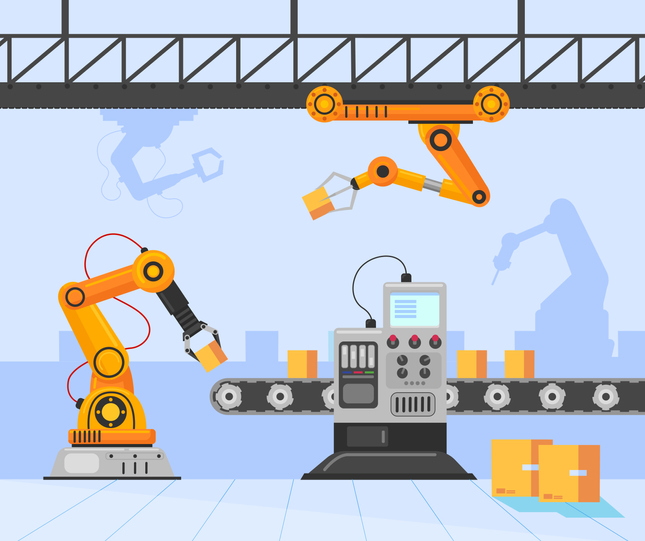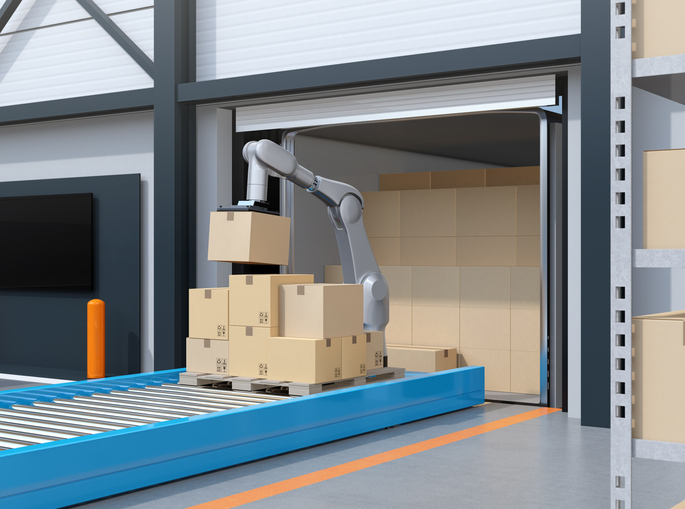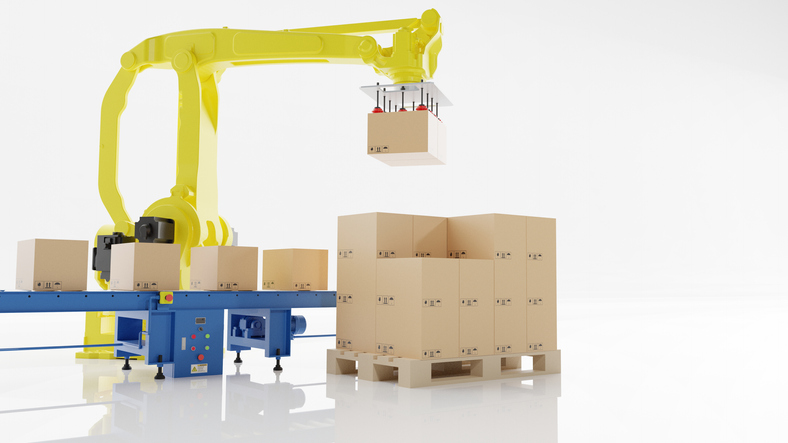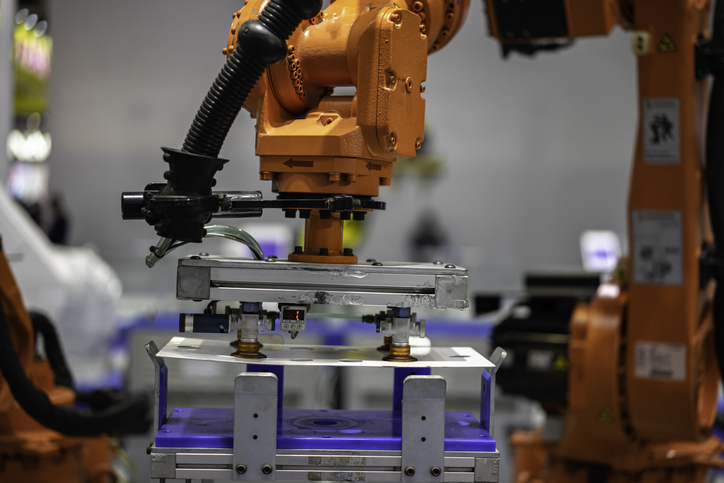In the ever-evolving landscape of manufacturing and warehouse automation, efficiency and precision are paramount. One technological marvel that has revolutionized the industry is the gantry robot. Gantry robots are automated systems designed for precision handling and movement. In this article, we delve into the anatomy of gantry robots and explore their diverse applications that have reshaped the manufacturing landscape.
Gantry Definition - What is a Gantry Robot?
At its core, a gantry robot comprises a framework of beams or an overhead bridge that spans the workspace. Attached to this structure is a horizontal gantry, equipped with a vertical axis that facilitates movement along the X, Y, and Z axes. The end effector, often a gripper or specialized tool, is mounted on the gantry, enabling precise manipulation of objects in the workspace.
Gantry robots are renowned for their exceptional precision, allowing for accurate placement and movement of objects within tight tolerances. The combination of linear motion along multiple axes ensures meticulous control over the robot's operations. This precision is a crucial factor to consider when determining if a gantry robot is the right choice for an application that demands exact positioning and handling.
These robots are versatile and adaptable to various manufacturing environments and applications. The open structure of gantry robots facilitates easy integration with other automated systems and production lines. This versatility allows for seamless collaboration and synchronization with existing processes, ensuring efficient workflow and minimizing disruptions during implementation.
Gantry robots are designed for high-speed operations, contributing to increased throughput and faster manufacturing processes. Their ability to swiftly and accurately execute tasks makes them ideal for applications demanding efficiency. When considering a gantry robot for an application, evaluating the required speed and the robot's capability to meet those demands is essential to ensure optimal performance.
Gantry robots are capable of handling varying payload capacities, making them suitable for a wide range of applications – from light assembly tasks to heavy-duty material handling. Their robust construction and structural integrity enable them to handle substantial loads, providing the necessary strength for applications involving heavy objects.
In summary, when determining if a gantry robot is the right choice for an application, factors such as precision, versatility, speed, efficiency, and payload capacity should be considered. Additionally, evaluating the specific requirements of the application regarding positioning, integration, and load handling will help determine if a gantry robot is the optimal solution for the task at hand.
Key Features of Gantry Robots
- Precision and Accuracy:
- Gantry robots are renowned for their exceptional precision, allowing for accurate placement and movement of objects within tight tolerances.
- The combination of linear motion along multiple axes ensures meticulous control over the robot's operations.
- Versatility:
- These robots are versatile and adaptable to various manufacturing environments and applications.
- The open structure of gantry robots facilitates easy integration with other automated systems and production lines.
- Speed and Efficiency:
- Gantry robots are designed for high-speed operations, contributing to increased throughput and faster manufacturing processes.
- Their ability to swiftly and accurately execute tasks makes them ideal for applications demanding efficiency.
- Payload Capacity:
- Gantry robots are capable of handling varying payload capacities, making them suitable for a wide range of applications – from light assembly tasks to heavy-duty material handling.
Applications in Manufacturing
- Pick-and-Place Operations:
- Gantry robots excel in pick-and-place operations, efficiently transferring components or products from one location to another with precision.
- Material Handling:
- In manufacturing environments, gantry robots play a crucial role in material handling tasks, moving raw materials or finished products within the production line.
- Assembly and Inspection:
- The precise control offered by gantry robots makes them invaluable in assembly tasks, ensuring components are accurately positioned and joined.
- Gantry robots are also utilized for quality control and inspection processes, enhancing product quality and consistency.
- Packaging and Palletizing:
- Gantry robots contribute to the automation of packaging and palletizing operations, streamlining the final stages of the manufacturing process.
- CNC Machine Loading/Unloading:
- Gantry robots are employed in CNC (Computer Numerical Control) machining environments for loading and unloading tasks, enhancing overall efficiency and reducing downtime.
What are the strengths and limitations of gantry robots?
Gantry robots are renowned for their exceptional precision, allowing for accurate placement and movement of objects within tight tolerances. The combination of linear motion along multiple axes ensures meticulous control over the robot's operations. These robots are versatile and adaptable to various manufacturing environments and applications. The open structure of gantry robots facilitates easy integration with other automated systems and production lines. Gantry robots are designed for high-speed operations, contributing to increased throughput and faster manufacturing processes. Their ability to swiftly and accurately execute tasks makes them ideal for applications demanding efficiency. Gantry robots are capable of handling varying payload capacities, making them suitable for a wide range of applications – from light assembly tasks to heavy-duty material handling.
It is important to consider the strengths and limitations of gantry robots when determining their suitability for specific applications. While gantry robots excel in precision and speed, there are certain factors to keep in mind. For instance, their open structure and adaptability make them versatile, but they may not be the best choice for applications requiring flexible motion. The rigid construction that enables high payload capacity and reach can limit their dexterity in tasks that demand more flexibility. Additionally, gantry robots are generally larger in size, which may pose challenges in applications with limited lateral or vertical space.
Understanding these strengths and limitations will help in assessing whether gantry robots are the right fit for a particular application. Their precision, versatility, and ability to handle various payload capacities make them well-suited for a wide array of manufacturing tasks. However, it is crucial to consider the specific requirements of the application, such as the need for flexible motion or space constraints, to ensure optimal utilization of gantry robots in the production process.
What are the standard applications for gantry robots?
Gantry robots are pivotal in manufacturing environments, facilitating a wide array of essential tasks. Material handling is a prime example, as these robots excel at efficiently moving raw materials or finished products within the production line. Their precise control and accuracy make them invaluable in assembly tasks, ensuring components are flawlessly positioned and securely joined. Gantry robots also play a significant role in quality control and inspection processes, guaranteeing heightened product quality and consistency.
In addition to these crucial functions, gantry robots contribute to the automation of packaging and palletizing operations, streamlining the final stages of the manufacturing process. Their capability to handle heavy-duty tasks is particularly advantageous in this context. By effortlessly manipulating large payloads, gantry robots demonstrate their versatility and effectiveness in meeting demanding size requirements.
Furthermore, gantry robots find practical applications in CNC (Computer Numerical Control) machining environments. They are instrumental in loading and unloading tasks, enhancing overall efficiency while minimizing downtime. This integration of gantry robots optimizes production processes, allowing for seamless workflow and increased productivity.
Thus, the standard applications for gantry robots encompass a broad range of tasks, including material handling, assembly, quality control and inspection, packaging and palletizing, and CNC machining. Their precise control, high payload capacity, and adaptability make them an indispensable asset in various industries, empowering manufacturers to streamline operations and achieve optimal productivity.<
How are gantry robots constructed and why does it affect their pricing?
Gantry robots are constructed in a way that sets them apart from other types of robots, and this construction has a significant impact on their pricing. Unlike standard industrial robot arms that can be shipped pre-assembled on a pallet, gantry robots are typically too large for this method of transportation. Instead, they are constructed on-site.
The construction process of a gantry robot begins with the assembly of a sturdy metal frame, which is mounted above the workstation on robust metal legs. This frame serves as the foundation upon which the gantry robot is built. The rest of the structure, including the movable components, is then attached to this frame, allowing the robot to move freely within the designated workspace and carry out its tasks.
The unique construction of gantry robots is what gives them their strength and capability to handle heavy-duty tasks. The sturdy metal legs and robust frame provide stability and support to the entire structure, making gantry robots ideal for applications that require lifting and moving heavy objects. Their design enables them to perform tasks like palletizing and depalletizing, material handling, sorting, assembly, and storage and retrieval with ease.
However, the size and complexity of gantry robot construction significantly affect their pricing. Because they are so large, gantry robots cannot be easily shipped pre-assembled like smaller robot arms. This means that additional labor is required to construct the gantry robot on-site, adding to the overall cost. The need for on-site construction introduces additional expenses such as transportation of materials, installation, and assembly labor.
Furthermore, the robust and durable materials used for gantry robot construction contribute to their higher pricing. The sturdy metal legs and frame, along with the specialized components required to enable the robot's precise movement and heavy-duty capabilities, come at a higher cost compared to those used in smaller robotic arms.
In summary, gantry robots are constructed on-site due to their large size, requiring additional labor for installation and assembly. The sturdy materials used for their construction, combined with the specialized components, make them suitable for heavy-duty tasks but also contribute to their higher pricing.
How much do gantry robots cost?
Gantry robots come with a wide range of costs, which can vary depending on the brand and region. The size and complexity of integration associated with gantry robots contribute to their high prices. Even a small-scale gantry robot project can cost around $50,000 USD, accounting for both equipment and integration labor expenses. Additionally, the construction of gantry robots is a unique factor that affects pricing, as they are often built on-site, resulting in additional costs related to labor.
Visigistics can help
Gantry robots stand as pillars of precision and efficiency in the manufacturing realm. Their ability to navigate complex tasks with accuracy has transformed production processes across industries. As technology continues to advance, the role of gantry robots is poised to expand, offering manufacturers new avenues for increased productivity and competitiveness in the global market. Embracing the power of gantry robots is not just a step towards automation; it's a leap into a future where precision and efficiency converge to redefine manufacturing excellence.
If you are exploring installing overhead gantry systems to improve the efficiency and safety in your manufacturing processes, contact Visigistics to speak with one of our Industrial robot experts. In many cases, we have helped companies improve their designs and reduce costs to create a faster ROI for gantry systems.





